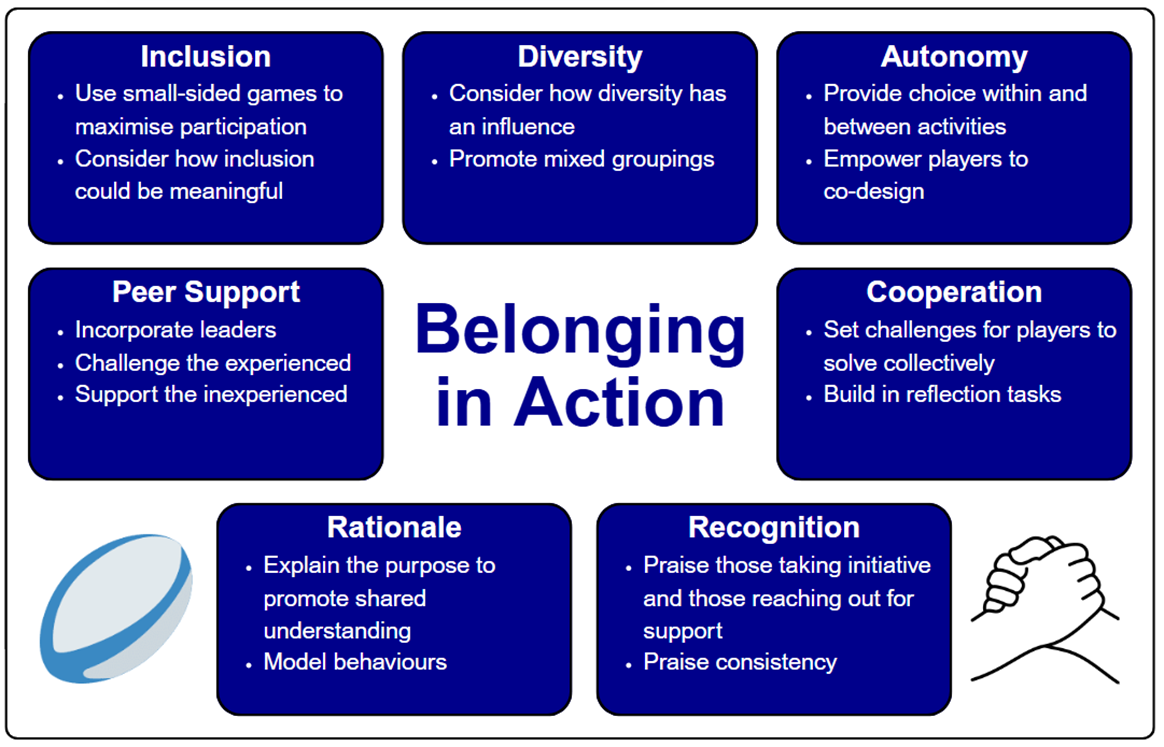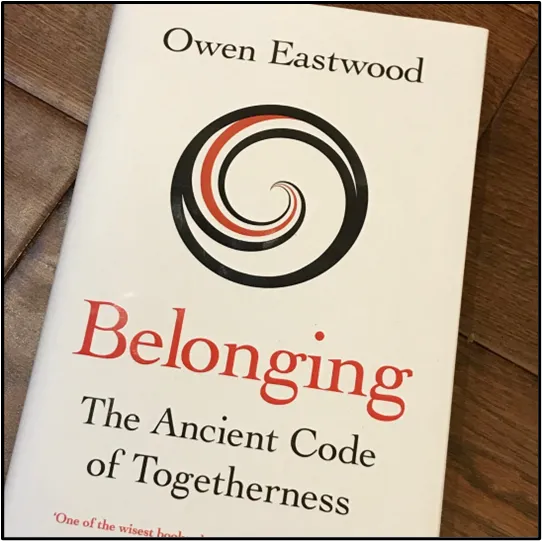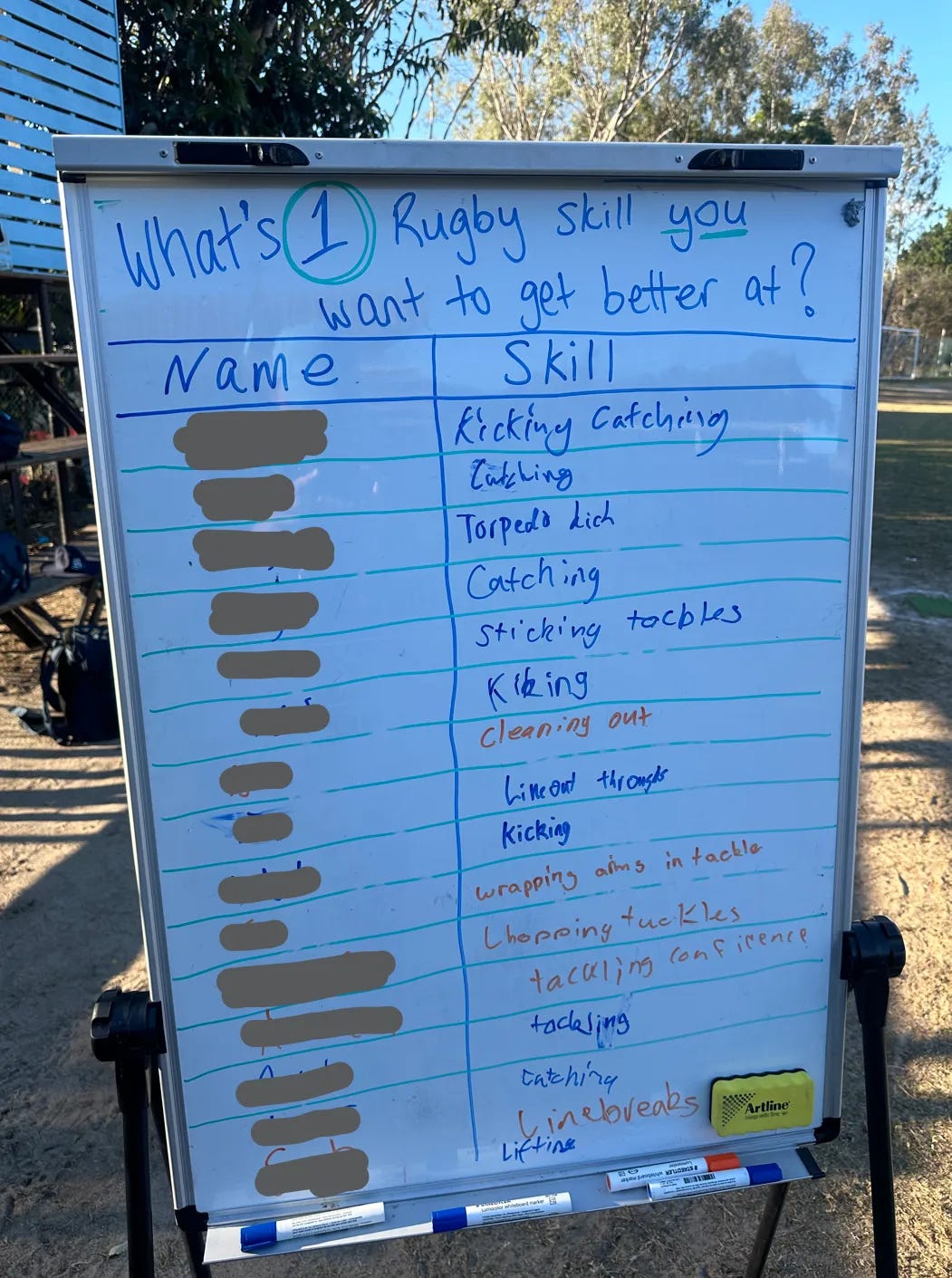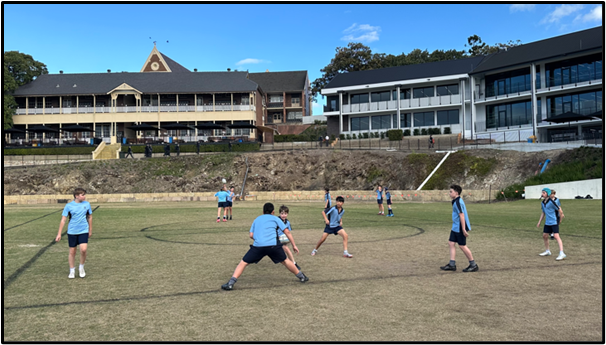Belonging is a fundamental human need
Harry Curtin once asked himself the question: "How can I better foster connection within the under-13s Brisbane Grammar rugby squad?" He shares some of his findings from the subsequent exploration.
I am a Physical Education teacher at Brisbane Grammar School (BGS) in Brisbane, Queensland, Australia. I also coach in several Rugby Union contexts. Primarily, this involves the Brisbane Grammar U13s program and the Queensland U18s Boys 7s team.
What is belonging?
For me, belonging involves a secure connection between individuals in a social context. It’s not a nice-to-have; it's a fundamental human need.
The definition in sport that I have found myself leaning on recently is “a sense of psychological connection with others in the sport setting and characterised by a sense of caring and security where individuals feel that they are included and respected for who they are” (Allen, 2006).
For someone to feel like they belong, they need to feel like they matter. Other people ask questions, listen to them, and take their thoughts and opinions seriously. They are included in ways that are meaningful to them. Their individuality is valued, and others notice when they achieve something.
When I first read Owen Eastwood’s brilliant book titled ‘Belonging: The Ancient Code of Togetherness’, I was fascinated to learn more.
In 2024, I started an Action Research Project, beginning with a deep dive into the belonging literature. This helped me gain an understanding of the foundational research and how belonging has been explored in youth sport specifically.
What I found most curious was that in the coaching literature, the idea of belonging was well supported, but there wasn’t a lot of practical advice for practitioners. If there was, it involved implementing something out of context (e.g., team meals or activities).
I was left wondering how someone could promote a sense of belonging during a training session: How could a training activity be designed and facilitated to promote belonging?
Using a game to foster belonging
Leaning on the literature, my coaching experience, and the specific context of Brisbane Grammar U13s, I designed a pre-training game to promote players' sense of connection with each other.
Boys engaged in a an activity called the Line Game as they arrived to training. You can access a summary of the project here. I don’t know the exact origin of this game, but I do know that both Ben Ryan, former Fiji 7s Olympic-winning coach and Russell Earnshaw, former English 7s player/coach, and good friend, have championed a similar activity called the rondo.
Inspired by their work, I used the Line Game to form the beginning of what the under-13 BGS rugby boys would experience across their 9-week season. At the start of every session, boys would engage in small groups playing the Line Game.
Their experience began with familiarisation, moved to game adaptations, and ended with increased autonomy. Once familiar with the game, boys nominated a specific rugby skill that they wanted to improve.
Using the identified skills, boys learned how to change their version of the Line Game to provide opportunities for group members to practice their chosen skill.
When a player wanted to work on their draw and pass, their group members would allow them to be on the attacking team in the middle. When a player wanted to work on their catching, the opponents would be sure to kick towards them at the start of the effort. When a player wanted to improve their tackling, they would spend more time in defence, and the attacking players would target them.
What was most impressive was that there were only a couple of game adjustments I guided the boys through. They went on to create nearly a dozen other ways that the game could be modified to cater to an individuals needs. They really are far more capable than we often
The findings of the project revealed three key themes:
Theme 1: Boys appreciated the diverse groupings and made an active effort to promote them.
Theme 2: The Line Game fostered meaningful inclusion due to game adaptations.
Theme 3: Boys went above and beyond to provide and benefit from peer-to-peer support.
In summary, the boys experienced a greater sense of connection to one another because of their involvement in the regular Line Games.
Another pleasing observation was that they started to spend more time with those they weren’t necessarily hanging around with at the beginning of the season.
The players shared valuable insights into each theme that highlighted the effect of their experience. The following quotes relate to each of the three themes mentioned above:
Theme 1: Boys appreciated the diverse groupings and made an active effort to promote them.
“I feel like I just learnt how to play with diverse [players], and I just learnt how to play with everyone, whether they were really good or not as good, didn’t matter, I could just play with anyone”.
Theme 2: The Line Game fostered meaningful inclusion due to game adaptations.
“Mine [chosen skill] was catching and it was good because Tim or Callum were both pretty good at kicking. They could just kick it up to me and I was able to catch at the start.”
Theme 3: Boys went above and beyond to provide and benefit from peer-to-peer support.
“Some people in those groups that you mixed up were good at certain skills, so if I needed help with one, the person who was really good at [that skill] could give me feedback.”
I’ve found that the type of game isn’t overly important. What is, though, is how key features that promote connection are incorporated.
For players to feel included, participation should be maximised. This is where small-sided games, for example, plays a roll. The less lines the better.
To extend on their inclusion, consider how meaningful their experience is:
Have they contributed to how the activity has been designed?
Were they asked about the level of challenge within the activity?
The belonging in action framework
Player autonomy is essential to the promotion of belonging.
If the players are able to influence choice within and between activities, they have a far greater chance of sensing belonging. Additionally, they way peer support is facilitated has a huge influence. Can you encourage leaders to support the learning of others?
Promoting opportunity for players to share their insights with each other, regardless of their skill level, fosters the feeling that all players are respected for who they are.
Reflecting on the Action Research Project experience, I felt I needed a way to guide my own practice design to ensure where possible I was promoting players sense of belonging during pratice.
To do this effectively, I’ve combined the research on belonging with my coaching experience over the last couple of years to create a framework.
This framework provides 7 design principles to guide practice design with an intention of enhancing connection. The best part is that the design principles don’t have to come at the cost of a technical or tactical focus. You can have both.
When was the last time your session plan or session conversations involved supporting the players' sense of connection?
Perhaps as a coach, it’s possible to design an activity that not only promotes a technical and/or tactical focus but also a stronger sense of belonging.
Did you know there’s a subscription option for Coaching Care Creativity? Nothing is behind a paywall so your subscriptions or coffee clicks can help keep the content going. The subscriptions are £5 a month or £50 for the year. You can also buy me a one-off coffee for just £5.






